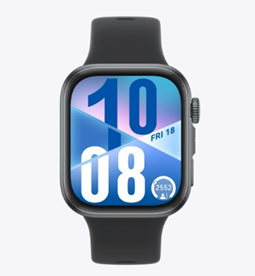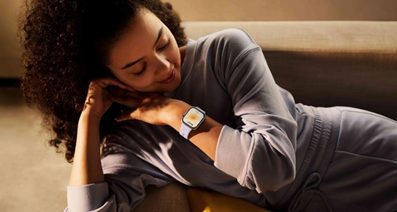Waking up to a dead smartwatch is an annoying way to start the day. You charged it fully before bed, only to find it powerless by morning—missing sleep data, alarms, and morning notifications. Many users face this issue, often due to unnecessary background processes, excessive health tracking, or poor charging habits. The good news is that most overnight battery drain problems can be fixed with simple adjustments to settings and usage patterns. In this article, we’ll explore the most common causes of nighttime battery drain and provide practical solutions to help your smartwatch last through the night and beyond.

Sleep Tracking & Health Monitoring Settings
How Sleep Studies Drain Battery
Smartwatches with advanced sleep tracking continuously monitor movement, heart rate, and even breathing patterns—all of which consume significant power. Some devices analyze sleep stages (light, deep, REM), requiring constant sensor activity. While useful, these features can drain 10-20% of your battery overnight. If you don’t need detailed sleep reports, consider disabling automatic sleep tracking or switching to a simpler mode that only detects basic sleep duration. Many watches also allow manual activation, so you can enable tracking only when needed.
Blood Oxygen vs. Heart Rate Monitoring Impact
Blood oxygen (SpO2) tracking is particularly power-hungry, often using bright LED lights to measure blood saturation levels. If enabled continuously, it can drain your battery much faster than heart rate monitoring alone. Unless you have specific health concerns, turning off overnight SpO2 tracking can significantly extend battery life. Heart rate monitoring, while less demanding, still consumes energy when set to frequent readings. Switching from "continuous" to "every 10 minutes" or "manual" during sleep hours can help. Some watches allow customized schedules, so you can disable these features at night and reactivate them in the morning.

Optimizing Nighttime Health Features
Balancing battery life and health tracking requires smart customization. Start by reviewing which metrics matter most to you—do you really need stress monitoring or skin temperature readings overnight? Many watches let you create a "sleep profile" that automatically disables non-essential sensors. Another trick is reducing the frequency of data syncing; storing information locally and syncing only when you wake up saves power. If your watch supports it, enabling airplane mode during sleep (while keeping Bluetooth on for alarms) can also help.
Always-On Display & Brightness Issues
An always-on display (AOD) is convenient but one of the biggest battery drainers. Even in dim mode, the screen continuously refreshes, consuming power throughout the night. If you don’t need to check the time constantly while sleeping, disabling AOD can save 15-30% of battery. Another factor is screen brightness—many watches auto-adjust based on ambient light, which can lead to unnecessary power use in dark rooms. Manually setting brightness to the lowest comfortable level helps. Some devices offer a "theater mode" or "sleep mode" that turns off the display entirely until you tap it.
Background Apps & Connectivity Problems
Bluetooth Drain From Phone Connection
Maintaining a constant Bluetooth connection with your phone ensures notifications and calls come through, but it also consumes battery. If your watch and phone are far apart overnight, the watch may waste power searching for a stable signal. Moving your phone closer to your bedside can help, but if you don’t need notifications while sleeping, temporarily disabling Bluetooth (or enabling airplane mode) is even better. Some watches allow scheduled disconnections, so Bluetooth turns off automatically during set hours. Alternatively, disabling call alerts and keeping only essential notifications (like alarms) reduces unnecessary wake-ups for the watch’s processor.
Notification Flood During Sleep Hours
Every buzz or beep from emails, social media, or messages forces your watch to wake up, lighting up the screen and draining the battery. Setting up "Do Not Disturb" (DND) mode overnight silences non-urgent alerts while allowing alarms to function. Many watches let you customize DND to block all notifications except calls from specific contacts. If your watch syncs too frequently with your phone, adjusting notification intervals to "batch" updates (e.g., every 30 minutes) instead of real-time can also conserve power. Review which apps are allowed to send overnight notifications—weather updates or news alerts are rarely needed while you sleep.
Weather/Email Apps That Never Sleep
Some third-party apps, like weather widgets or email clients, run background updates even when you’re not using them. These apps constantly fetch new data, consuming both processing power and battery. Check your watch’s app permissions and disable background refresh for non-essential applications. If your watch supports it, uninstalling rarely used apps can prevent hidden battery drain. Built-in apps are usually more optimized than third-party ones, so relying on default weather or fitness tracking can be more efficient. Regularly reviewing which apps are active overnight ensures no unnecessary processes are running.
Battery Health & Charging Habits
Over time, lithium-ion batteries degrade, losing their ability to hold a full charge. If your watch is older, it may simply not last as long as it used to, especially overnight. Avoid letting the battery drop to 0% frequently, as deep discharges accelerate wear. Similarly, charging to 100% every night can stress the battery—some watches now offer "optimized charging" that stops at 80% overnight and completes to 100% just before you wake up. Heat is another enemy of battery life; remove your watch from the charger as soon as it’s full to prevent overheating. If battery degradation is severe, a replacement may be the only solution.
Advanced Power Saving Solutions
Most smartwatches include a "power saver" mode that disables non-critical features to extend battery life. Enabling this overnight can turn off health tracking, AOD, and background syncs while keeping basic timekeeping functional. Some devices offer ultra-low-power modes that switch to a simple digital watch face, lasting days on a single charge. If your watch supports customizable battery profiles, create one specifically for nighttime use. Another trick is reducing haptic feedback (vibrations) for notifications, as the motor consumes energy with every alert. For watches with GPS, ensure location tracking isn’t running unnecessarily overnight.
Conclusion
Persistent overnight battery drain usually stems from a combination of settings rather than a single issue. Start by disabling unnecessary health tracking, optimizing connectivity, and adjusting display settings. Monitor your battery usage over a few nights to identify which changes have the biggest impact. If your watch is still struggling after troubleshooting, it may be time for an upgrade. Among leading brands, HUAWEI offers impressive battery efficiency—if you're considering a new wearable, the Huawei Fit 4 delivers up to 10 days of battery life, ensuring you wake up to a fully charged device every morning. With the right habits and settings, you can enjoy uninterrupted sleep tracking without the frustration of a dead watch.
